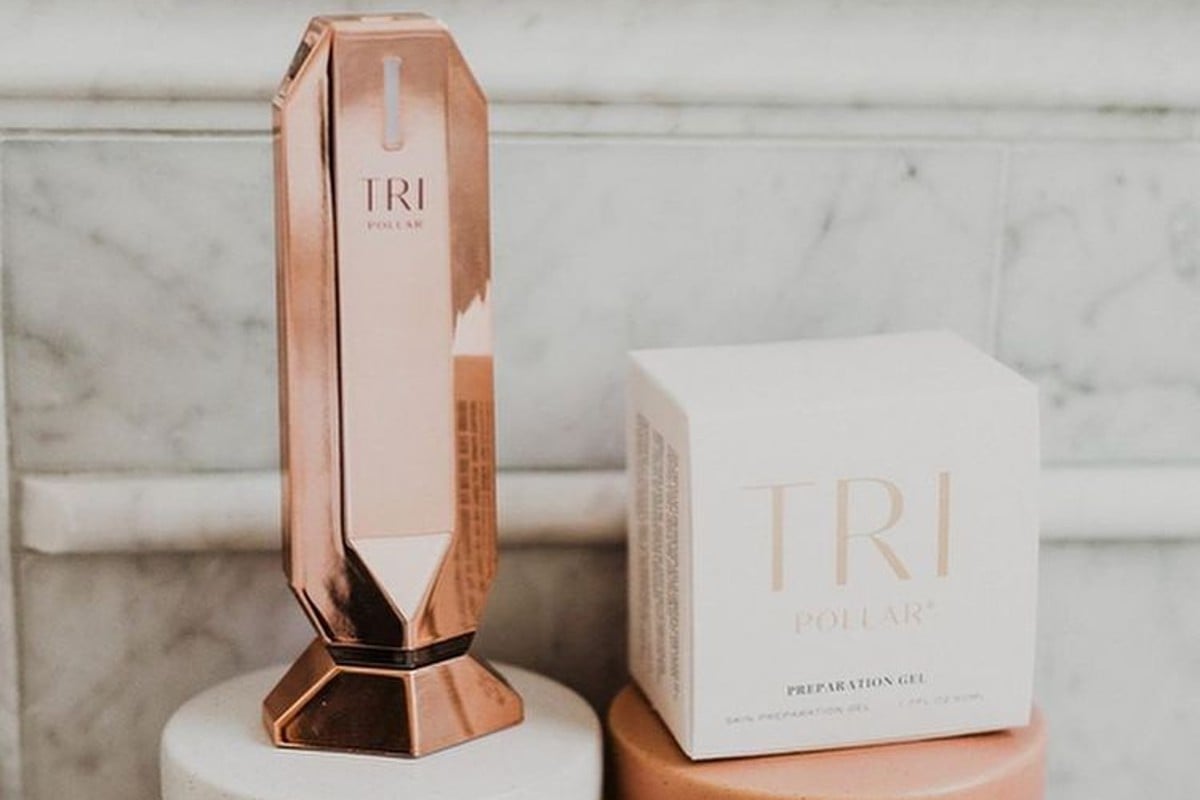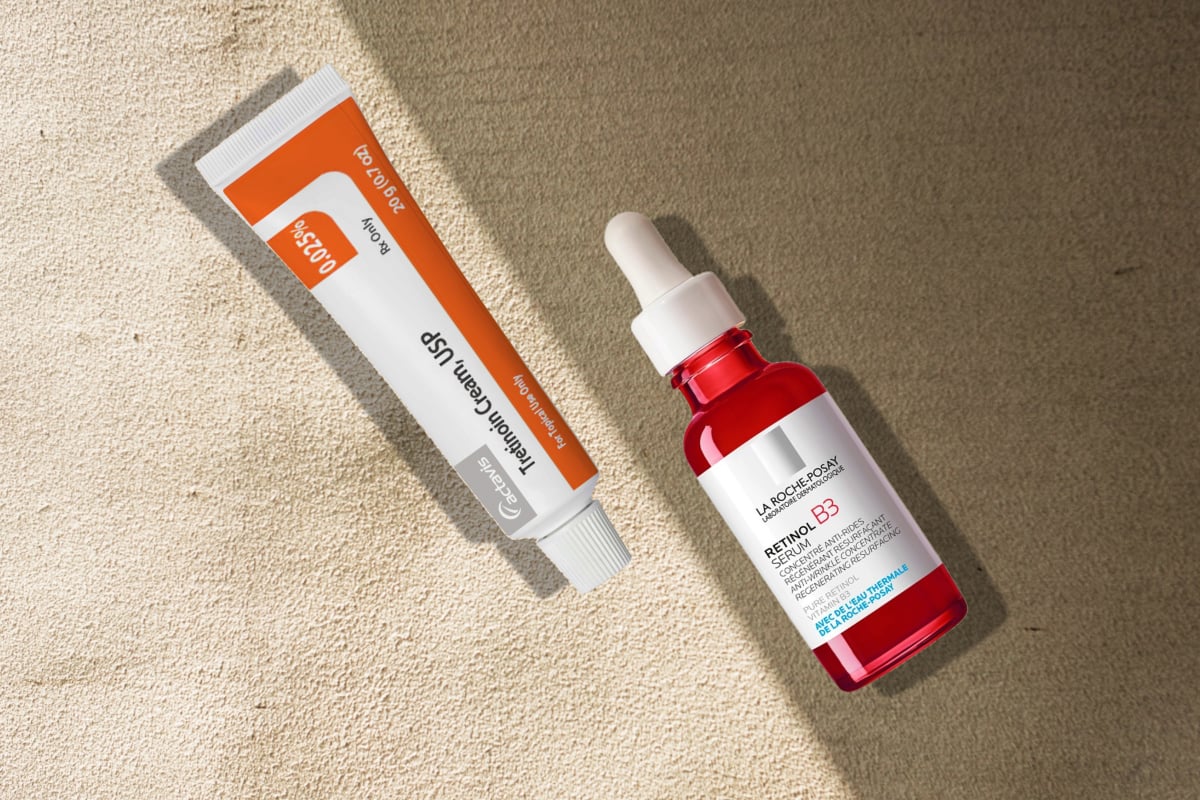We’ve pored over the research, and what we’ve found is nothing short of impressive. While including foods rich in linoleic acid is a great thing as they reduce the risk of heart disease and stroke, a whole host of benefits can come from applying this fatty acid to your skin. Stick around to learn what linoleic acid can do for your skin.
What is linoleic acid?
Linoleic acid is a good fat that your skin needs to stay healthy. In fact, it’s the most abundant fatty acid in the epidermis.[1]
Your skin uses linoleic acid to produce ceramides, which are lipid molecules that form what is known as the skin’s barrier. Ceramides are essential for maintaining your skin’s hydration, as they create a barrier that reduces moisture loss and protects against environmental damage.[1][2] When the skin lacks linoleic acid, it can result in a decrease in ceramide production. This can lead to a compromised barrier function, which can manifest as dryness, irritation, and an increased susceptibility to skin infections.
Your body can’t produce linoleic acid on its own, so you need to get your dose of this healthy fat from your diet or skincare routine. Linoleic acid is found in vegetable oils, nuts, and seeds, and is often added as a moisturizer in skincare products like serums and creams.
Linoleic acid vs linolenic acid
Linoleic acid and linolenic acid are like siblings in the skincare world: both are good fats, known as omega fatty acids, which are great for your skin. Linoleic acid is an omega-6, and linolenic acid is an omega-3. Together they form vitamin F. These fatty acids within vitamin F provide structure and flexibility to the outer layer of your cells.
Benefits of linoleic acid for skin
- Promotes hydration: Linoleic acid maintains a healthy skin barrier, which is crucial for hydrating your skin. Essentially, linoleic acid works by minimizing the amount of moisture that evaporates from your skin into the air, a process known as transepidermal water loss (TEWL). By reducing TEWL, linoleic acid makes sure that your skin retains more of its natural moisture.[1][2]
- Provides UV protection: Did you know that vitamin F has the ability to change the cellular response of our skin to UV damage? Yes, linoleic acid can provide an extra layer of photoprotection thanks to its antioxidant and anti-inflammatory activities, protecting your skin against free radicals and photoaging.[2][3]
- Restores skin barrier: Linoleic acid is essential for skin health because it contributes to the formation of ceramides, lipids that form the epidermal barrier’s structure.[2][5][6] Linoleic acid restores and strengthens the skin’s barriers for a more resilient complexion. Besides, thanks to its barrier-restoring properties, linoleic acid can treat chronic skin conditions like psoriasis and dermatitis.[1][4]
- Balances acne-prone skin: Linoleic acid is often recommended for acne-prone skin because it has anti-inflammatory effects that can reduce follicular inflammation and lessen breakouts.[2] Also, linoleic acid makes the sebum secreted by the sebaceous glands more liquid and soft, which can be cleared more easily from the follicles, so it’s less likely to clog the pores and trigger acne. On the other hand, when the skin lacks linoleic acid, the sebum is produced with oleic acid, which is denser and more likely to block the pores and cause irritation. This is why a large percentage of acne-prone people have low levels of linoleic acid.[7]
- Reduces inflammations: Linoleic acid is an anti-inflammatory that functions as an emollient, meaning it softens the skin and can reduce swelling and redness.
- Brightens the skin: Linoleic acid can slightly brighten your skin and reduce UV-induced hyperpigmentation by suppressing the production of melanin, the pigment that darkens skin color and causes dark spots.[8]
Is it safe?
Although safe and effective, you should be cautious when using linoleic acid on your skin. Products containing this ingredient have a short shelf life and lose their effectiveness three to six months after opening. Other than that, linoleic acid is safe for sensitive and acne-prone skin, gentle enough for daily use, and safe during pregnancy and breastfeeding.
Who should use linoleic acid?
The shortest possible answer is: Everyone should use linoleic acid. Every skin can benefit from a stronger barrier. Moreover, linoleic acid can treat most skin conditions, like acne, dryness, and eczema.
How to use it
Linoleic cannot be synthesized in the skin, so you must obtain it through your diet or skincare products. How you use linoleic acid in your skincare routine depends on the product at hand, but it’s best to start slowly to see how your skin reacts. Although linoleic acid rarely causes irritation or sensitivities, we advise you to do a patch test first—your skin might not tolerate other ingredients in the product.
Thanks to its gentle and hydrating nature, you can safely use linoleic acid together with retinol, vitamin C, glycolic acid, and salicylic acid.
Linoleic vs. oleic acid
Linoleic acid is an omega-6 fatty acid, while oleic acid is an omega-9 fatty acid. Linoleic acid is lightweight, absorbed very quickly, and is intended for oily, acne-prone, and sensitive skin. On the other hand, oleic acid has a richer texture and is ideal for all those with dry, dehydrated, and aging skin.
You ask, we answer
- Is linoleic acid good for oily skin?
Yes, linoleic acid is a good choice for oily skin since it’s lightweight and doesn’t feel greasy or sticky. Everyone needs hydration and a stronger barrier, and linoleic acid is a fantastic moisturizing treatment for oily skin.
- Is linoleic acid good for acne?
Linoleic acid is often used for treating acne because it softens the sebum and prevents it from clogging the pores. It also reduces follicular inflammation, which in turn prevents further breakouts.
- Is linoleic acid safe for sensitive skin?
Yes, linoleic acid is completely safe for sensitive skin. It increases hydration and fortifies the protective barrier, the two things that sensitive skin needs the most.
- Is linoleic acid good for dry skin?
That’s right, considering that it helps retain moisture and prevent dryness, linoleic acid is one of the best treatments for dry skin.
References
Women’s Concepts uses reliable sources, including dermatologists’ insights, clinical trials, and scientific journals, to find accurate information and support all the facts shared in our articles. All statements and claims have clear and legit references. Read our editorial policy to learn more about our sources of information, our process of researching and fact-checking the content, and how our team strives to keep all articles updated, completed, and trustworthy.
- Nasrollahi SA, Ayatollahi A, Yazdanparast T, Samadi A, Hosseini H, Shamsipour M, Akhlaghi AA, Yadangi S, Abels C, Firooz A. Comparison of linoleic acid-containing water-in-oil emulsion with urea-containing water-in-oil emulsion in the treatment of atopic dermatitis: a randomized clinical trial. Clin Cosmet Investig Dermatol. 2018 Jan 5;11:21-28. doi: 10.2147/CCID.S145561. PMID: 29379309; PMCID: PMC5759849.
- Lin TK, Zhong L, Santiago JL. Anti-Inflammatory and Skin Barrier Repair Effects of Topical Application of Some Plant Oils. Int J Mol Sci. 2017 Dec 27;19(1):70. doi: 10.3390/ijms19010070. PMID: 29280987; PMCID: PMC5796020.
- Yang, B., Zhou, Y., Wu, M. et al. ω-6 Polyunsaturated fatty acids (linoleic acid) activate both autophagy and antioxidation in a synergistic feedback loop via TOR-dependent and TOR-independent signaling pathways. Cell Death Dis 11, 607 (2020). https://doi.org/10.1038/s41419-020-02750-0
- Li, X, Yang, Q, Zheng, J, et al. Efficacy and safety of a topical moisturizer containing linoleic acid and ceramide for mild-to-moderate psoriasis vulgaris: A multicenter randomized controlled trial. Dermatologic Therapy. 2020; 33:e14263. https://doi.org/10.1111/dth.14263
- Elias PM, Brown BE, Ziboh VA. The permeability barrier in essential fatty acid deficiency: evidence for a direct role for linoleic acid in barrier function. J Invest Dermatol. 1980 Apr;74(4):230-3. doi: 10.1111/1523-1747.ep12541775.
- Kendall AC, Kiezel-Tsugunova M, Brownbridge LC, Harwood JL, Nicolaou A. Lipid functions in skin: Differential effects of n-3 polyunsaturated fatty acids on cutaneous ceramides, in a human skin organ culture model. Biochim Biophys Acta Biomembr. 2017 Sep;1859(9 Pt B):1679-1689. doi: 10.1016/j.bbamem.2017.03.016. Epub 2017 Mar 21.
- Linder, J.. (2008). Role of oils in the topical treatment of acne. Cosmetic Dermatology. 21. 211-214.
- Ando, H., Ryu, A., Hashimoto, A. et al. Linoleic acid and α-linolenic acid lightens ultraviolet-induced hyperpigmentation of the skin. Arch Dermatol Res 290, 375–381 (1998). https://doi.org/10.1007/s004030050320



![Does resveratrol in red wine benefit your skin? While sipping on a glass of red wine can be a delightful experience, relying on it for skincare benefits is not the best idea. Sure, red wine contains a smidge of resveratrol, but let's put things into perspective. The concentration of resveratrol in red wine is relatively low. Red wines, specifically Pinot noir from France, typically contain 0.361-1.972 mg of resveratrol per liter.[8] To hit that reference dose of 500mg of resveratrol, you'd need to drink a lot of wine. We're talking about downing anywhere from 100 to 1000 glasses per day. It's a scene straight out of a wine lover's wildest dreams, but definitely not the healthiest approach. Resveratrol Benefits for Skin](https://womensconcepts.com/wp-content/uploads/2022/03/Resveratrol-Benefits-for-Skin.jpg)
